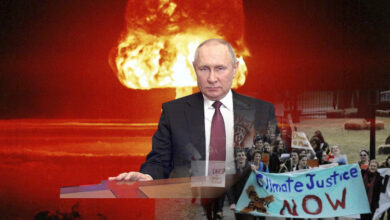Is Anyone Listening to the Experts? – Watts Up With That?

Roger Caiazza
A couple of recent posts here have highlighted the difficulties of a transition to an electric grid powered primarily by wind and solar using New York’s Climate Leadership and Community Protection Act (Climate Act) as an example. This post describes the New York Independent System Operator’s latest relevant report on this topic. The difficulties raised are so large that the question becomes is any leader in New York listening to this expert opinion.
Background
The Climate Act was passed in 2019 and became effective on 1/1/2020. The Climate Action Council has been working since then to develop plans to implement the Act. Over the summer of 2021 the New York State Energy Research & Development Authority (NYSERDA) and its consultant Energy + Environmental Economics (E3) prepared an Integration Analysis to “estimate the economy-wide benefits, costs, and GHG emissions reductions associated with pathways that achieve the Climate Act GHG emission limits and carbon neutrality goal”. Three Integration Analysis implementation strategies were incorporated into the Draft Scoping Plan when it was released at the end of 2021. The focus of the recent posts has been the Climate Act target for a carbon free electric generating system by 2040.
The two recent posts showed that the benefits are over-stated and the costs under-estimated in the Draft Scoping Plan. My last post here explained that there is a new Draft Scoping Plan Overview available and showed that their claim that the “cost of inaction exceeds the cost of action by more than $90 billion is bogus. More recently the Manhattan Contrarian post More Focus on The Impossible Costs of a Fully Wind/Solar/Battery Energy System looked at the feasibility and costs of such a system using just solar resources as an example. The costs projected are far in excess of the Draft Scoping Plan estimates.
At the same time that the State has been developing its implementation plans for the Climate Act, the New York Independent System Operator (NYISO) has augmented their regular reliability planning process with supplementary analyses addressing the Climate Act challenge. The 2021-2030 Comprehensive Reliability Plan (CRP) report (appendices) released late year includes an excellent overview chapter “Beyond the Comprehensive Reliability Plan – Road to 2040” on this topic that is the focus of this post.
NYISO Reliability Planning
Appendix G of the CRP report describes the NYISO reliability planning process. The reliability planning component of the process consists of two analyses: the Reliability Needs Assessment (RNA) and Comprehensive Reliability Plan (CRP). The RNA evaluates the adequacy and security of the bulk power transmission facilities over a ten-year planning period, the resources in megawatts (MW), and the locations where required to meet projected needs. If necessary, the NYISO will request solutions for identified needs. The CRP determines if the proposed solutions are viable and sufficient then documents the solutions meet the identified reliability needs.
The CRP report itself provides an exhaustive description of all the reliability planning aspects considered in the existing process. The report describes reliability risk factors: “The Reliability Planning Process findings reflect the base case assumptions, which were set in accordance with applicable reliability rules and procedures. There are, however, numerous risk factors that could adversely affect the implementation of the plan and hence system reliability over the planning horizon. These risk factors may arise for several reasons including climate, economic, regulatory, and policy drivers.”
The report highlights some of the risk factors and provides the first instance where it is not clear whether New York State is listening to these experts. The CRP states “A growing amount of New York’s gas-turbine and fossil fuel-fired steam-turbine capacity is reaching an age at which, nationally, a vast majority of similar capacity has been deactivated and then concludes that “While transmission security within New York City (Zone J) is maintained through the ten-year period in accordance with design criteria, the margin would be very tight starting in 2025 and would be deficient beginning in 2028 if forced outages are experienced at the historical rate”. At the same time the New York State Department of Environmental Conservation (DEC) has rejected permits for new replacement generating facilities that addresses this risk factor. For example, the Danskhammer Energy Center proposed a replacement gas-fired combustion turbine but DEC denied the permit “The proposed project would be inconsistent with or would interfere with the statewide greenhouse gas emissions limits established in the Climate Act.”
Draft Scoping Plan
The Scoping Plan is supposed to provide the Climate Action Council with the information necessary to make decisions. The CRP describes several critical issues that must be addressed if the Climate Act transition to emissions-free generation is to succeed without creating a reliability crisis. The first is how to handle renewable resource intermittency. The second is whether battery storage devices will work as needed. It also raises issues with asynchronous wind and solar power and concludes with a discussion of the zero-emissions dispatchable resource needed to keep the system working. These are described in more detail in the addendum to this post. For the most part the Draft Scoping Plan ignores or glosses over all these issues.
The CRP defines renewable resource intermittency well. It notes that “the variability of meteorological conditions that govern the output from wind and solar resources presents a fundamental challenge to relying on those resources to meet electricity demand. Solar resources will have little to no output during the evening and nighttime hours and reduced output due to cloud cover, while wind resources can experience significant and sustained wind lulls.” Additionally, it notes that “With high penetration of renewable intermittent resources, the system will need dispatchable, long-duration resources to balance intermittent supply with demand especially during extended periods where the intermittent resources are not available. These types of resources will need to be significant in capacity and have attributes such as the ability to come on-line quickly, stay on-line for as long as needed, maintain the system’s balance and stability, and adapt to meet rapid, steep ramping needs.” I don’t think the Draft Scoping Plan does an acceptable job describing the magnitude of this problem.
There is a section devoted to storage resources. It explains that seasonal power capability is the main consideration when evaluating most generation resources for their ability to serve load and provide for reliability. It goes on to explain that with energy storage resources, there are two other critical aspects that need to be considered. The first is the duration needed from the storage device and the second involves charging the storage device. Energy storage has been touted as the preferred alternative to peaking power plants but the CRP notes that “Since the ‘fuel’ for storage is electricity from local resources and the grid, the surplus energy in the ‘load pocket’ where storage is located needs to be more than the energy that is needed from the storage device including losses.” Furthermore, the CRP highlights the point that “battery storage resources help to fill in voids created by reduced output from renewable resources, but periods of reduced renewable generation rapidly deplete battery storage resource capabilities resulting in the need for longer running dispatchable emission-free resources”. Lastly, the CRP notes that Pathways to Carbon-Neutral NYC found “a stringent regulatory and siting regime for storage in New York City, including site-based limitations and fire codes regarding siting of battery storage”. I don’t think any of the people touting battery storage as a solution to intermittency understand the implications of these statements. For its part the Draft Scoping Plan ignores all the issues associated with energy storage.
The CRP section on Inverter Resources covers an aspect of the renewable transition that is very rarely considered. In short, existing generation is synchronized with the electric grid but wind and solar provide asynchronous power. This difference must be considered in order to maintain a reliable system. The Eastern Interconnection Planning Collaborative (EIPC) recently described a decline in grid performance when inverter-based resources displace conventional synchronous machines. The degradation in performance is due to a number of factors, including the loss of, or change in, location of reactive power resources, the lack of transmission facilities to transmit the energy to load, and/or the reduction in primary frequency response due to the loss of system inertia from the retirement of legacy synchronous generation. The Draft Scoping Plan does not address the implication of the following statement; “The ability of inverter-based resources to function properly often depends on the strength of the grid at or near the interconnection of the resources”. That means that if inverter-based resources are connected to a “weak” portion of the grid they “may be subject to instability, adverse control interactions, and other issues”. I think that it would be appropriate for the Draft Scoping Plan to discuss a situation where limitations of the transmission grid could cause wind and solar generation to not provide power to the grid but it does not.
The final relevant section of the CRP discusses the need for dispatchable, emissions-free resources. The CRP notes that the amount of dispatchable emission-free resources needed in their scenarios is over 32,000 MW in 2040, approximately 6,000 MW more than the total fossil-fueled generation fleet on the grid in 2021. The CRP states that providing this resource will “require an unprecedented level of investment in newand replacement infrastructure, and/or the emergence of a zero-carbon fuel source for thermal generating resources”. Furthermore, the CRP notes that the one-hour ramp requirements could be over 10,000 MW and a six-hour ramp of over 25,000 MW. Finally, they conclude that “While there are hundreds of projects in the NYISO interconnection queue, there are none that would be capable of providing dispatchable emission-free resources that could perform on a multi-day period to maintain bulk power system reliability. Such resources are not yet widely commercially available.” The Draft Scoping Plan response to this is claim that this resource could use green hydrogen as a place holder. Aside from the fact that it is not commercially available, the Scoping Plan does not address whether it can meet the technical criteria specified in the CRP.
Conclusion
There were many good comments to the post More Focus on The Impossible Costs of a Fully Wind/Solar/Battery Energy System replying to some comments that suggested the transition to zero emissions electricity is easily achievable. Subsequently I found the NYISO Comprehensive Reliability Plan document. It supports those who argued that such a transition will be difficult and included some additional arguments that I thought would be of interest to readers here. I encourage interested readers to download that document.
Ultimately, the question in this post is whether any of these concerns are being considered by the Hochul Administration and New York’s Climate Action Council. These political appointees are supposed to be guided by the Scoping Plan but based on my evaluation to date of the Draft Scoping Plan most of the key issues are over-looked. I showed a specific example where current DEC policy and actions directly contradict the concerns expressed in the CRP. I can only conclude that no one in power is listening to the reliability experts in New York. I cannot imagine how this can possibly end well.
—————————————————————————————————————————————
Roger Caiazza blogs on New York energy and environmental issues at Pragmatic Environmentalist of New York. More details on the Climate Leadership & Community Protection Act are available here. This represents his opinion and not the opinion of any of his previous employers or any other company with which he has been associated.
Addendum Highlights from NYISO Climate Act Planning Analyses
The biggest risk to future electric system reliability is the Climate Act. In order to respond, NYISO commissioned a couple of studies. The 2019 Climate Change Study – Phase I examined the impacts that climate change will have on temperature and the resultant impact on load as well as expected changes due to new policies. The most recent winter peak load was 22,542 MW and summer load was 31,723 MW. The study projects that load will increase in the winter to over 56,000 MW and in the summer to over 47,000 MW when the Climate Act is implemented. In 2020, the NYISO commissioned phase II of the Climate Change Study (“Climate Change Impact and Resilience Study”) that examined the resources needed to meet load in a 2040 scenario. That report concluded: “that the variability of meteorological conditions that govern the output from wind and solar resources presents a fundamental challenge to relying on those resources to meet electricity demand. Solar resources will have little to no output during the evening and nighttime hours and reduced output due to cloud cover, while wind resources can experience significant and sustained wind lulls.”
The CRP did additional work looking at the wind lull problem during development. These analyses considered an arbitrary wind lull of week-long loss of wind energy of either projected NY on-shore or off-shore wind energy. Not surprisingly, they found that this type of event could exceed the loss of load expectation reliability criterion. The CRP concludes:
“With high penetration of renewable intermittent resources, the system will need dispatchable, long-duration resources to balance intermittent supply with demand especially during extended periods where the intermittent resources are not available. These types of resources will need to be significant in capacity and have attributes such as the ability to come on-line quickly, stay on-line for as long as needed, maintain the system’s balance and stability, and adapt to meet rapid, steep ramping needs.”
NYISO Executive Summary Road to 2040 – Storage Resources (Verbatim)
Solar and wind resources are dependent on variable meteorological conditions, and thus their generating output does not always coincide with demand. Energy storage allows for time shifting of generation to meet the timing of demand. Storage resources charge during times of surplus and then discharge at other times when the power is needed.
The seasonal power capability of suppliers would typically be the main consideration when evaluating most generation resources for their ability to serve load and provide for reliability. With energy storage resources, there are two other critical aspects that need to be considered. The first is the duration needed from the storage device. Load duration curves can provide the context for how long a storage device may be needed for reliability. The duration of need can be a significant amount of time during a given day. The second critical aspect involves charging the storage device. Since the “fuel” for storage is electricity from local resources and the grid, the surplus energy in the “load pocket” where storage is located needs to be more than the energy that is needed from the storage device including losses. The NYISO Climate Change Study noted that battery storage resources help to fill in voids created by reduced output from renewable resources, but periods of reduced renewable generation rapidly deplete battery storage resource capabilities resulting in the need for longer running dispatchable emission-free resources. Additionally, the “Pathways to Carbon-Neutral NYC,” which was commissioned by the New York City Mayor’s Office of Sustainability, Con Edison, and National Grid, noted a stringent regulatory and siting regime for storage in New York City, including site-based limitations and fire codes regarding siting of battery storage.
NYISO Executive Summary Road to 2040 – Inverter-Based Resources
There is so much detail in this section that I chose not to reproduce it verbatim. The first two paragraphs state:
With the planned increased to renewable energy resources on the system, there are several important considerations to evaluate in addition to traditional steady state and dynamics analysis. It is expected that many renewable generators will be connected to the grid asynchronously through power electronic devices (i.e., inverter-based resources). The Eastern Interconnection Planning Collaborative (EIPC) recently issued the “Planning the Grid for a Renewable Future” whitepaper indicating a decline in grid performance when inverter-based resources displace conventional synchronous machines. The paper finds that degradation in performance is due to a number of factors, including the loss of, or change in, location of reactive power resources, the lack of transmission facilities to transmit the energy to load, and/or the reduction in primary frequency response due to the loss of system inertia from the retirement of legacy synchronous generation.
The ability of inverter-based resources to function properly often depends on the strength of the grid at or near the interconnection of the resources. Grid strength is a commonly used term to describe how the system responds to system changes (e.g., changes in load, and equipment switching). In a “strong” system, the voltage and frequency are relatively insensitive to changes in current injection from the inverter-based resource. Inverter-based resources connecting to a portion of the system rich in synchronous generation that is electrically close or relatively large is likely connecting to a strong part of the system. Inverter-based resources connected to a “weak” portion of the grid may be subject to instability, adverse control interactions, and other issues.
This section goes on to describe measures related to this issue and where they are problems in New York. “The prevailing measure of system strength is the short-circuit ratio calculation. Short-circuit ratio is defined as the ratio of short-circuit apparent power (SCMVA) at the point of interconnection (POI) from a three-phase fault at the POI to the power rating of the resource.” “Another measure of system strength is voltage flicker caused by the connection of large reactive devices (such as a shunt reactive device or a large motor). Flicker not only affects lighting but has the potential to disrupt industrial processes and consumer electronics.” The document shows that there are some locations in New York where these problems will have to be addressed.
NYISO Executive Summary Road to 2040 – Dispatchable Resources
The final portion of this section discusses the need for significant amounts of dispatchable resources to address the intermittency of wind and solar. Results from several studies are mentioned.
The Climate Change Study looked at 100 x 40 (emission-free electric grid by 2040). It noted the significant amount of dispatchable resources that would be needed to meet that goal but did not describe the technology that would be able to provide a dispatchable resource, instead choosing to refer to generic dispatchable, emission-free resources. Not surprisingly, the Climate Change report found that a similar amount of dispatchable resources as the RNA case would be needed to maintain reliability under baseline assumptions. However, under CLCPA assumptions, the amount of dispatchable emission-free resources needed increases to over 32,000 MW in 2040, approximately 6,000 MW more than the total fossil-fueled generation fleet on the grid in 2021. The Climate Change Study noted that the current system is heavily dependent on existing fossil-fueled resources to maintain reliability and eliminating these resources from the mix “will require an unprecedented level of investment in new and replacement infrastructure, and/or the emergence of a zero-carbon fuel source for thermal generating resources” (emphasis added). The Climate Change Study did note that while the amount of installed capacity (MW) of dispatchable resources is significant, the amount of energy generated (MWh) required from such resources would likely not be significant, with the percent of total energy being in the range of 10% ― 20% range depending on the penetration level of intermittent resources.
The report “Pathways to Carbon-Neutral NYC,” issued April 2021 stated “Both low carbon gas and battery storage can supply dispatchable electricity to the grid. However, both technologies are untested at the scale required to deeply decarbonize the city. Batteries are limited by the amount of energy that they can store and how fast that energy can be discharged. Batteries also require capital to build and space to occupy. At the same time, low carbon gas availability is uncertain, and there is no policy framework to develop these resources at scale. While maintaining gas-fired electricity generation assets can avoid new capital expenditures, sources of renewable natural gas (RNG) would need to be connected to the existing pipeline gas transmission and distribution system, requiring investments. Additionally, RNG combustion still generates air pollutant emissions, which must be considered (emphasis added).”
The NYISO Grid in Transition study noted that it is generally recognized today that meeting New York load with high levels of intermittent renewable resource output, particularly solar and wind generation, will require the NYISO to have sufficient flexible, dispatchable and potentially fast ramping supply to balance variations in intermittent resource output. These variations will include not only short-term variations in output during the operating day as a result of changes in wind speed and cloud cover but also a sustained ramp up of solar output at the beginning of the day as the sun rises and a sustained ramp down of solar output at the end of the day as the sun sets. The Climate Change Study noted in the winter under the CLCPA scenario that the one-hour ramp requirements could be over 10,000 MW and a six-hour ramp of over 25,000 MW.
This section of text concludes with the following highlighted text: “While there are hundreds of projects in the NYISO interconnection queue, there are none that would be capable of providing dispatchable emission-free resources that could perform on a multi-day period to maintain bulk power system reliability. Such resources are not yet widely commercially available.”




